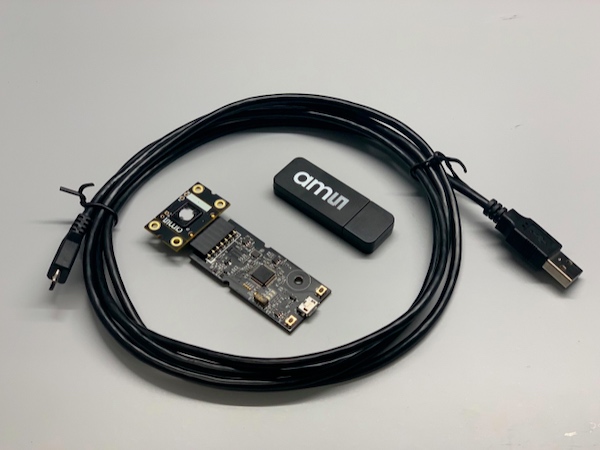Highlights of ams OSRAM’s UV-A-detecting Sensor
The TSL2585 sensor is an ambient light sensor (ALS) with UV and light flicker detection. The device is a six-pin, OLGA (organic land grid array) package sensor with a 1.8 V I2C interface capable of up to 1Mbit/s transfer speeds in fast mode. Its footprint measures 2 mm x 1 mm x 0.35 mm.

Internally, the sensor uses photopic, IR, and UV photodiodes to provide ambient light, UV, and light flicker detection information. ams OSRAM manufactures these sensors with interference filters that cover each individual photodiode pixel to detect photons from the right EM band. The sensor also features three integrated modulators with up to 14 kHz fast sampling rate.
According to ams OSRAM, the sensor can detect ambient light even if it’s covered by materials with low transmissivity. This enables a TSL2585 chip to provide reliable ALS data when embedded under a device’s screen, such as an OLED display.
How TSL2585 Helps IoT Devices Pick Up on UV-A Rays
ams OSRAM designed the TSL2585 primarily for wearables like smartwatches or smart armbands. Wearables with UV-A detection can monitor a user’s UV radiation exposure, allowing him or her to take the proper preventative precautions, like seeking shelter or using sunscreen.
The same principle can also be applied for smartphones, which are ams OSRAM’s second intended application for the TSL2585 sensor. However, ams OSRAM notes that when embedded in smartphone designs, this sensor is not as effective as it would be in a wearable that is constantly exposed to a user’s ambient environment.

The TSL2585 can also be used as a device’s main ambient light sensor, which commonly regulates display brightness in phones and tablets. It can easily convert the UV-A readouts into a viable ambient UV index estimation. This helps the camera with auto-exposure and flicker detection.
Beyond wearables and smartphones, this sensor module can be used in IoT devices. When integrated into smart homes (or even smart cities), the TSL2585 is said to provide more in-depth data on different levels of UV radiation, measured from multiple stationary locations throughout a day.
Future Use Cases for UV-A-detecting Sensors
ams OSRAM says the TSL2585 is the first sensor to include UV-A detection. In the future, this technology may expand into other use cases, from distance sensing to particle sensing. For example, UV-A-detecting sensors may someday be used under the screen of mobile cameras. Alternately, they may find use in ultra-small particle detectors—ranging from subatomic particles to dust.



Comments are closed